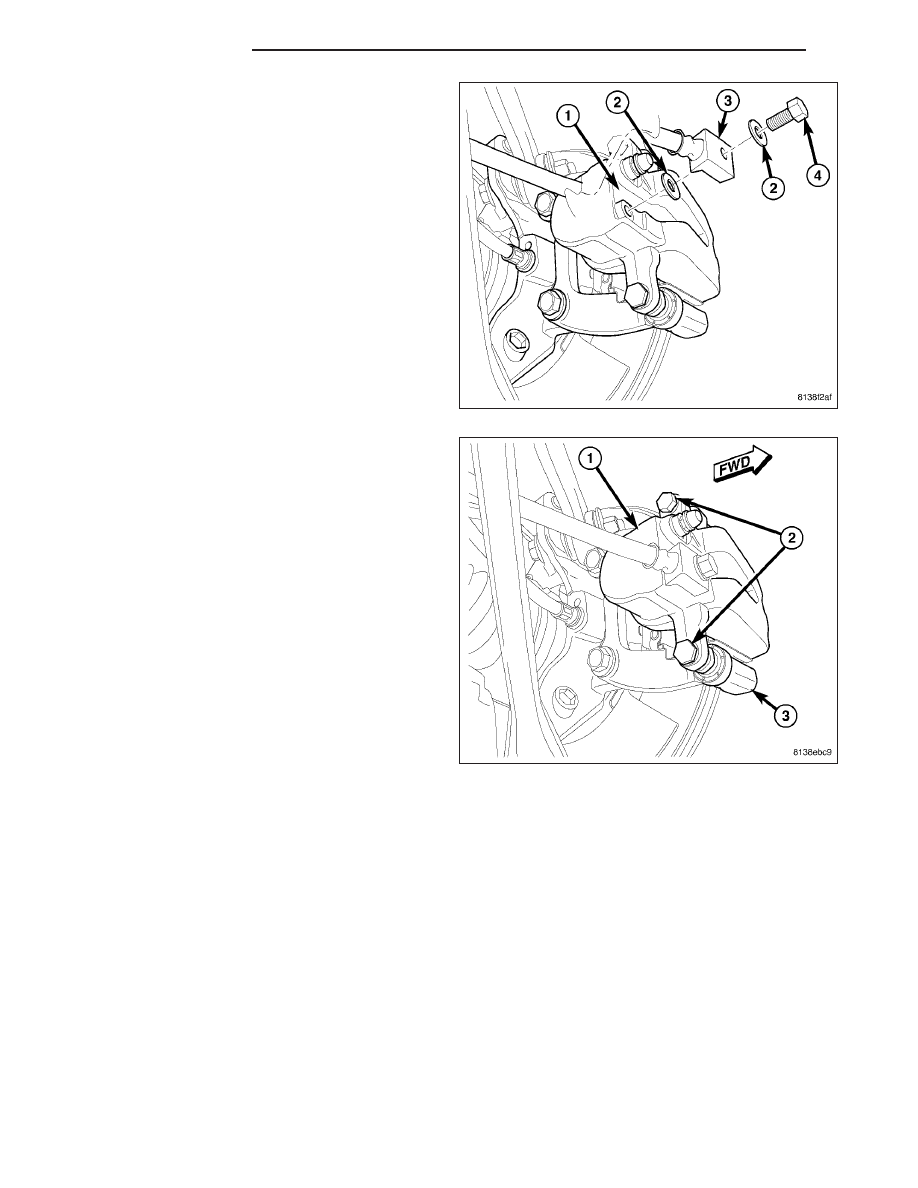Chrysler 300/300 Touring/300C, Dodge Magnum. Manual - part 155

5. Remove banjo bolt (4) connecting flexible brake
hose (3) to caliper (1). There are two sealing wash-
ers (2) (one one each side of hose fitting) that will
come off when bolt is removed. Discard these
washers; install NEW washers on installation.
6. While holding guide pins from turning, remove cal-
iper guide pin bolts (2).
7. Remove brake caliper (1) from brake adapter (3)
and pads.
DISASSEMBLY
NOTE: Before disassembling brake caliper, clean and inspect it. (Refer to 5 - BRAKES/HYDRAULIC/ME-
CHANICAL/DISC BRAKE CALIPER - CLEANING) (Refer to 5 - BRAKES/HYDRAULIC/MECHANICAL/DISC
BRAKE CALIPER - INSPECTION)
WARNING: Under no condition should high pressure air ever be used to remove a piston from a caliper
bore. Personal injury could result from such a practice.
CAUTION: Do not use excessive force when clamping caliper in vise. Excessive vise pressure will cause
bore distortion.
1. Drain brake fluid from caliper.
5 - 62
BRAKES - BASE
LX